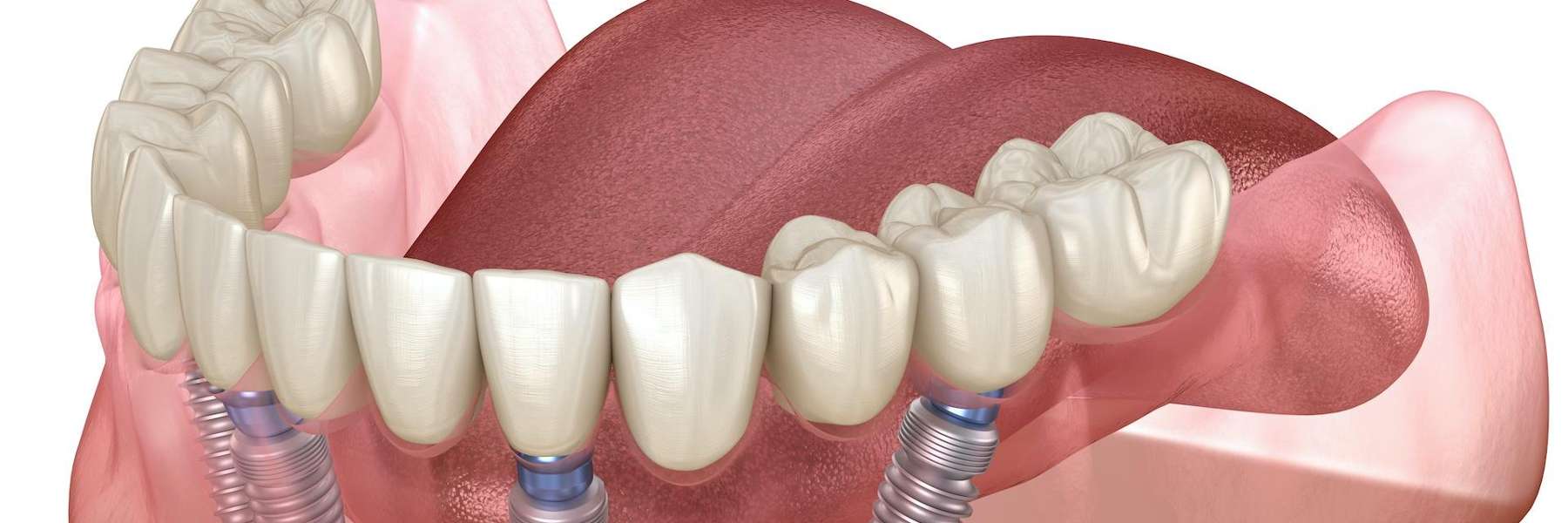
In the aftermath of tooth loss, it’s vitally important that the site of the lost tooth (or teeth) be safeguarded against infection and that structural support be provided to the patient’s jawbone and remaining teeth.
In some cases, patients who’ve suffered tooth loss will opt for dental bridges or dentures. Others, however, will opt for the most effective and longest-lasting tooth replacement solution, dental implants. It’s worth noting that, for as well-regarded as dental implants have historically been, thanks to advancements in technology, they’re actually getting better!
Today, we’re looking at dental implants – what they are, when and why they’re necessary, and how technology is helping them to become more convenient to get and even more effective.
What Are Dental Implants?
Dental implants are widely considered to be the best long-term tooth replacement solution. In a dental implant procedure, an artificial root, in the form of a small titanium post, is surgically implanted by a dentist into the jawbone at the site of a lost tooth. These posts are placed in the jawbone left by a lost tooth, covered with a protective material, and allowed to fuse permanently with the jawbone through a process called "osseointegration," after which they create an anchoring point for an artificial tooth. More than anything, this permanent replacement in the jawbone of a tooth’s root is what sets dental implants apart as a tooth replacement solution.
Once the post is in place and integrated with the bone, an implant-supported dental crown, which is typically made of porcelain and designed to look and function exactly like a natural tooth, is attached to the post as a permanent, fixed replacement for the missing tooth. Once this procedure is complete, a patient can once again enjoy the look and feel of a natural tooth.
The benefits of dental implants and crowns actually extend beyond the site of a lost tooth, as the structural support provided by the implant helps to maintain jawbone density, while the crown helps the mouth to maintain form and function, preserving the patient’s natural bite, and preventing misalignment among surrounding teeth.
With proper care, a dental implant can be expected to last well over a decade, if not forever, without the need for retreatment!
Can Anyone Get Dental Implants?
Unfortunately, dental implants aren't right for everyone. A person’s age and health history play an important role in determining whether dental implants are an appropriate solution. Candidates for dental implants should typically be at least 18 years of age and have both fairly healthy gums and a jawbone structure strong enough to support an implant.
How Has Dental Implant Technology Progressed Over Time?
Dental implant technology has made significant progress over the years. Perhaps the most important of these advancements is in osseointegration, where the development of biocompatible materials has helped to ensure greater stability and durability of dental implants.
Of course, the progress doesn’t simply stop there! Additional advancements have been made in dental implant technology in recent years, leading to improved success rates, shorter treatment and recovery times, and enhanced aesthetics. Some of the most prominent among these have been in the areas of:
- Implant design - The design of dental implants has evolved to enhance their performance. Where, originally, implants were cylindrical in shape, they now come in more advanced designs. Tapered implants, for instance, provide better primary stability and improved load distribution.
- Implant surface modifications – Surface modifications of dental implants like acid etching, plasma spraying, and nanostructured coatings have been developed to aid in osseointegration, improving the implant's ability to integrate with the bone, reducing healing times, and improving success rates.
- Computer-aided implant planning – Computer-aided implant planning allows for precise treatment planning and placement. Using digital imaging techniques and software, dentists can accurately assess a patient's jawbone, plan implant placement virtually, and ensure precise positioning during the procedure.
- Immediate placement and loading – Once upon a time, dental implants required a healing period before a final restoration (a dental crown, for instance) could be placed. However, recent advancements in implant technology now allow for immediate implant placement and, in some cases, immediate loading with a temporary or final prosthesis.
These advancements (and others) have revolutionized the field of dental implant technology. As a result, dental implant procedures are now an even more successful and positively predictable way to replace missing teeth, restore oral function, and improve overall oral health!
As always, of course, it's extremely important to consult with a dentist in order to determine if dental implants are the right tooth replacement solution for you. If it’s most convenient that this takes place in a Tampa dental office, we’ve got you covered!
Dental Crowns and Cosmetic Dentist in Tampa, Florida
If you’re looking for a dental office in the Tampa, FL area where you can learn more about dental implants and crowns, contact dentist Dr. Roberto Bellegarrigue and the North Tampa Dentistry team to schedule a consultation!
